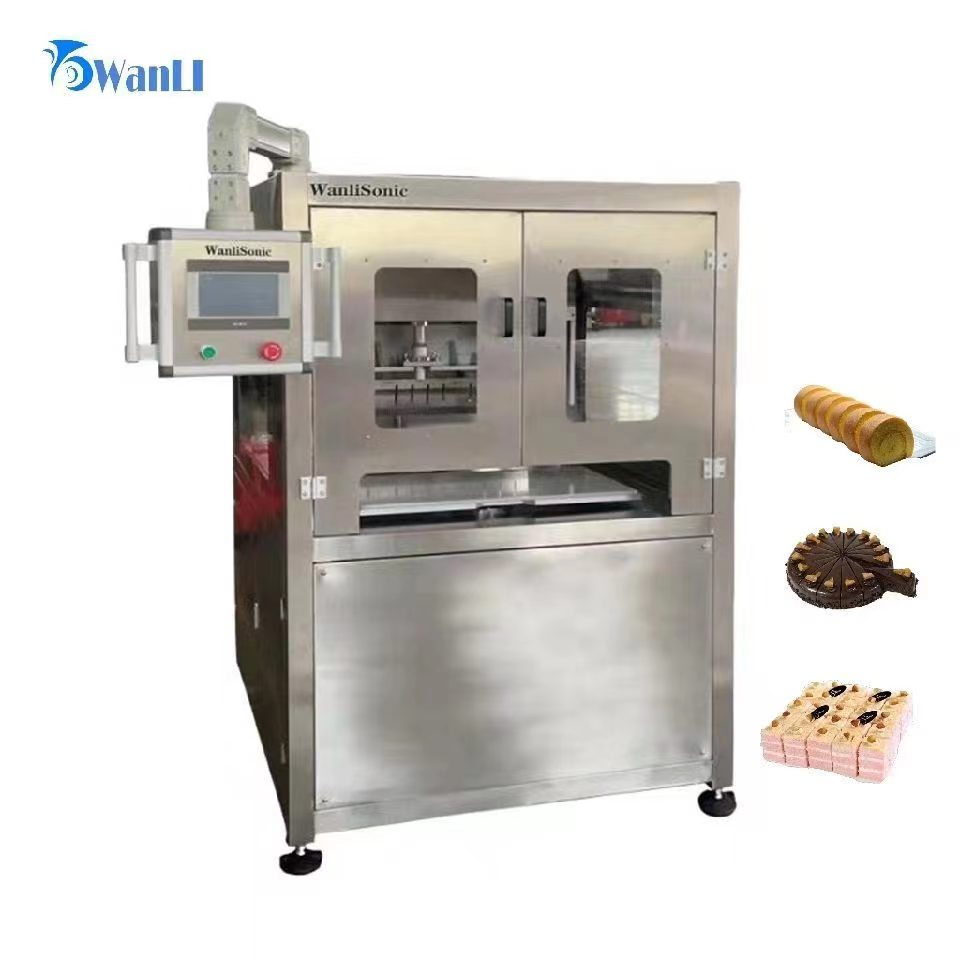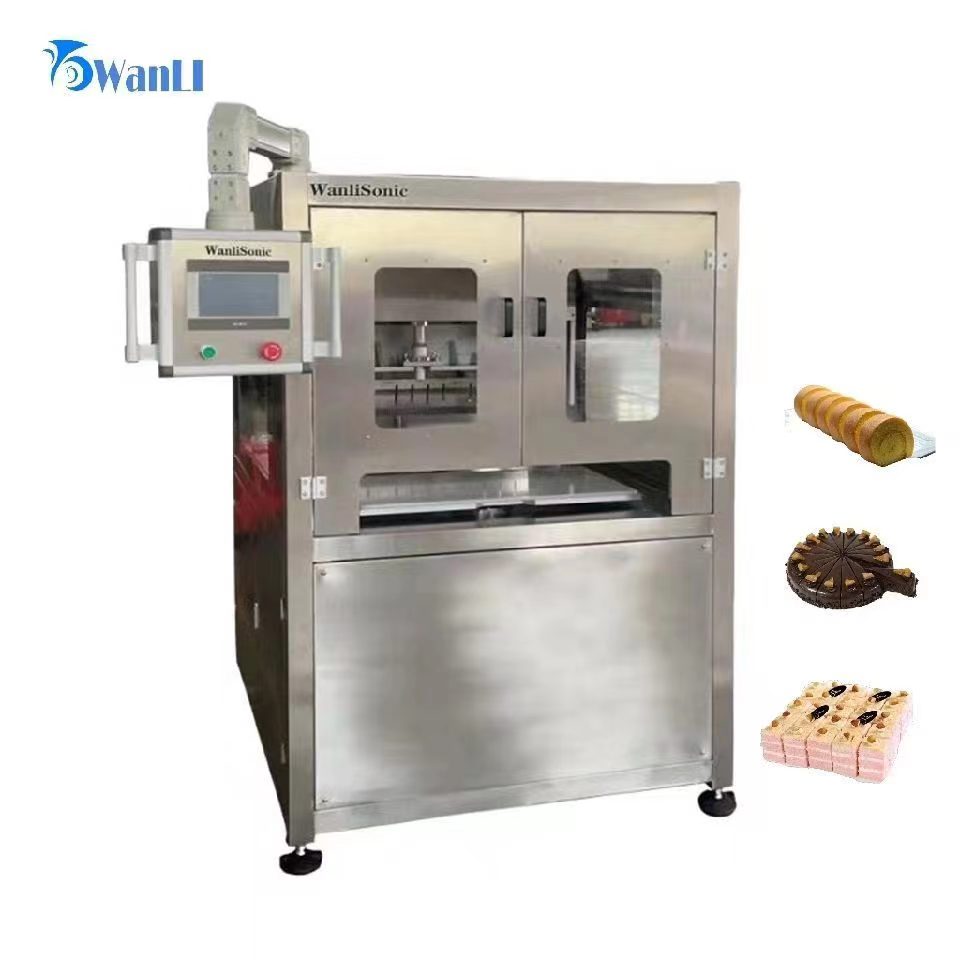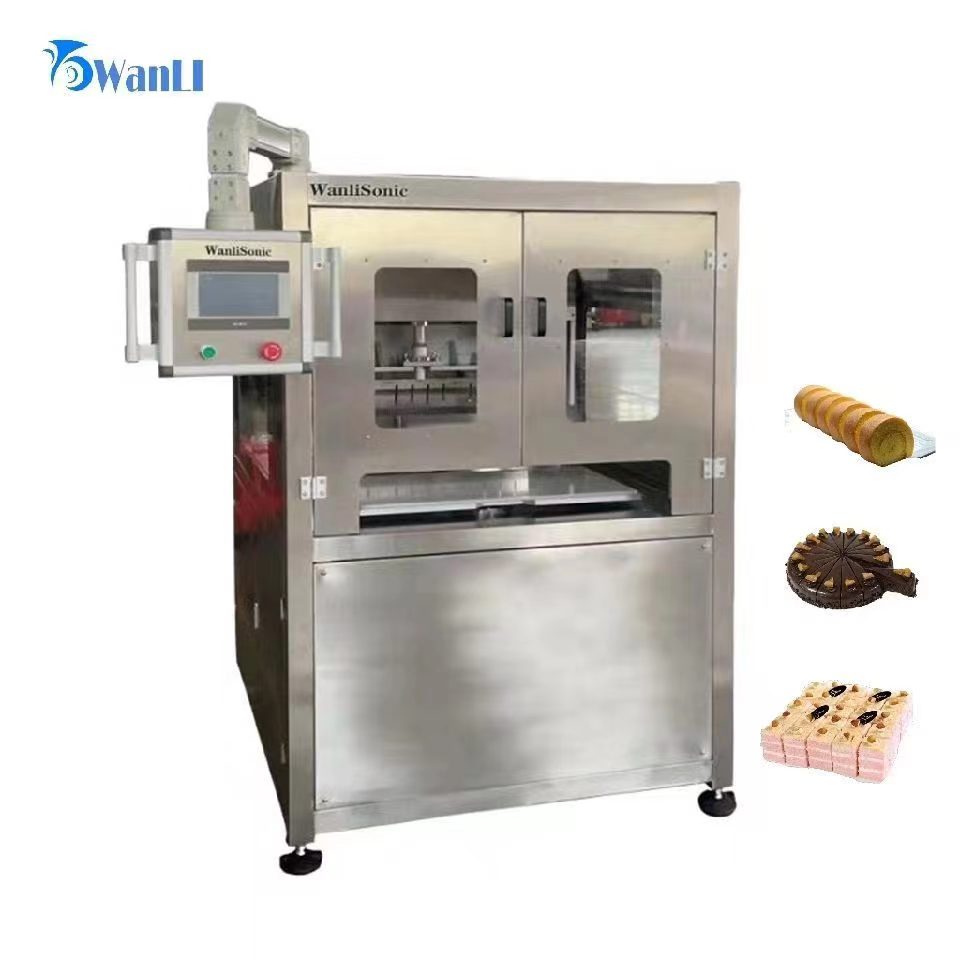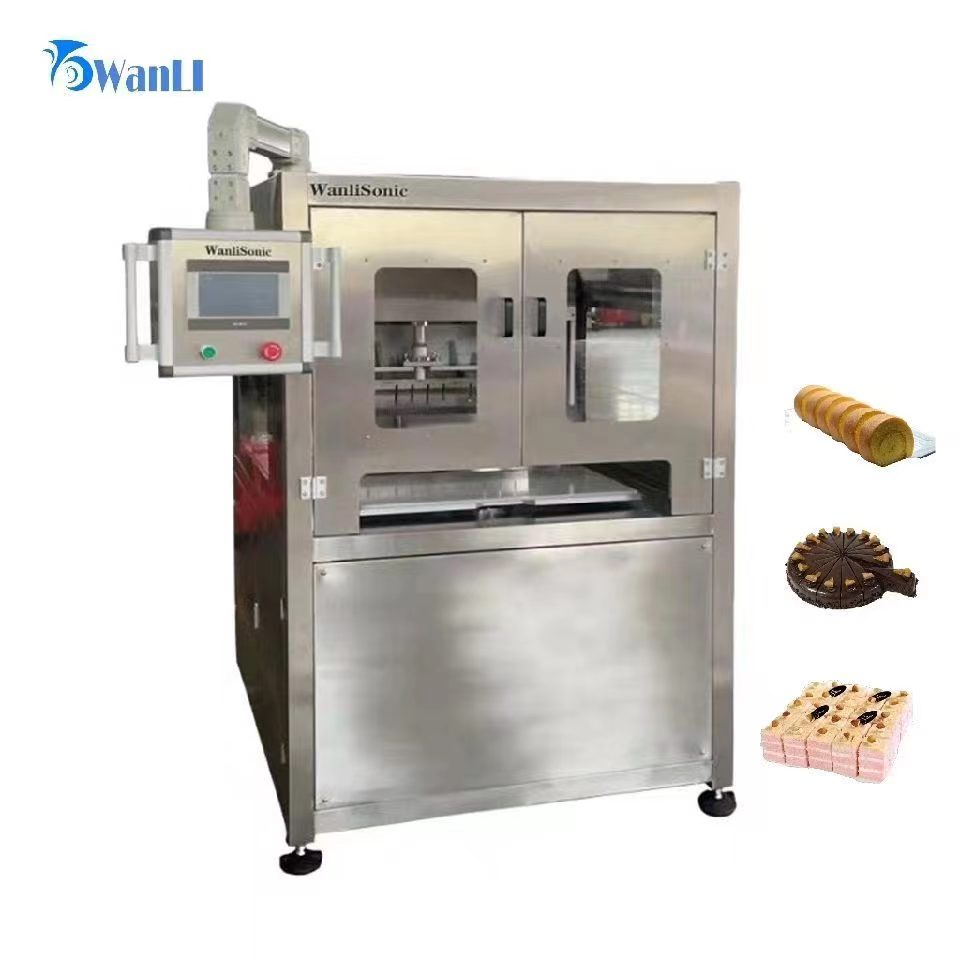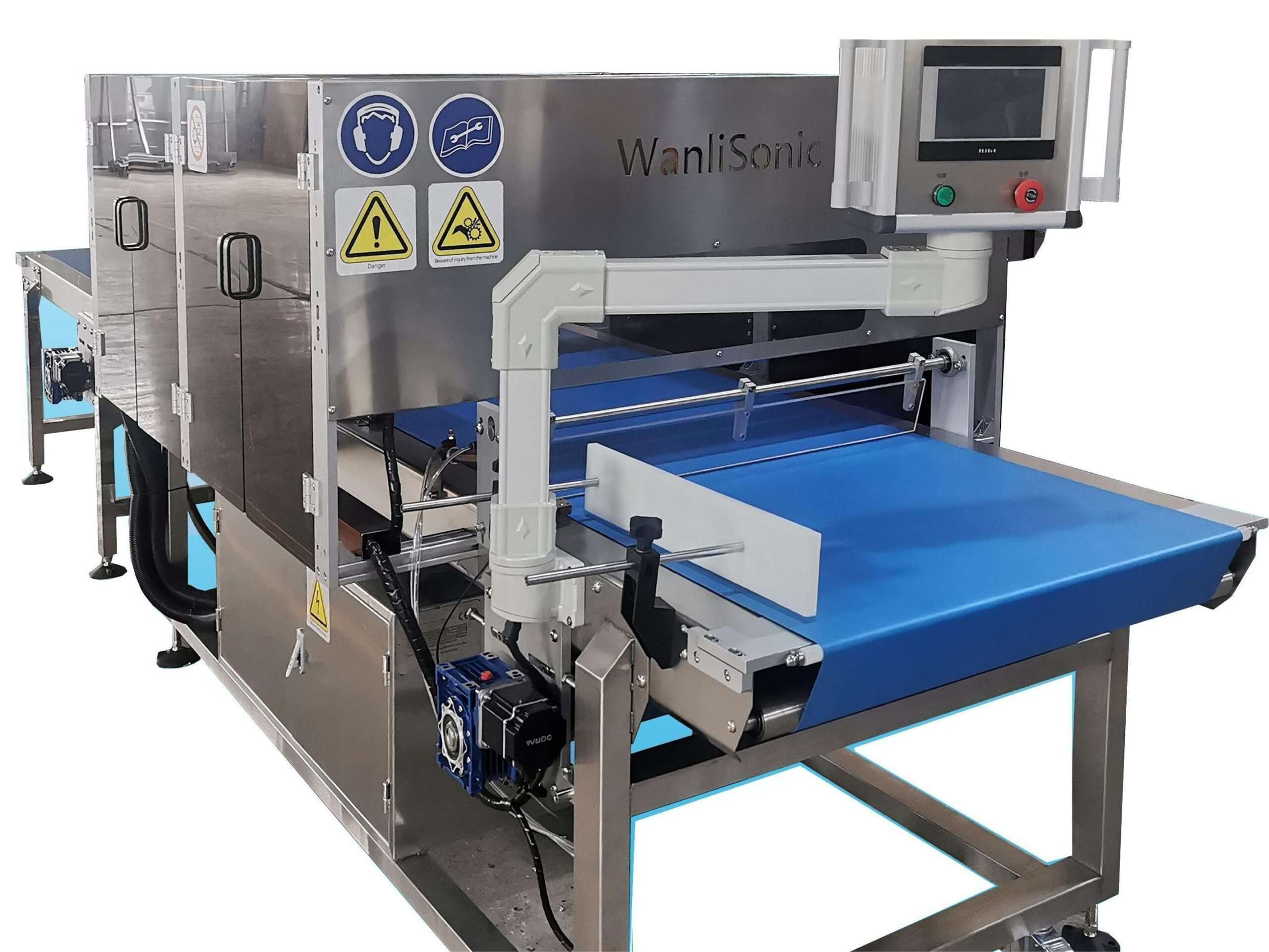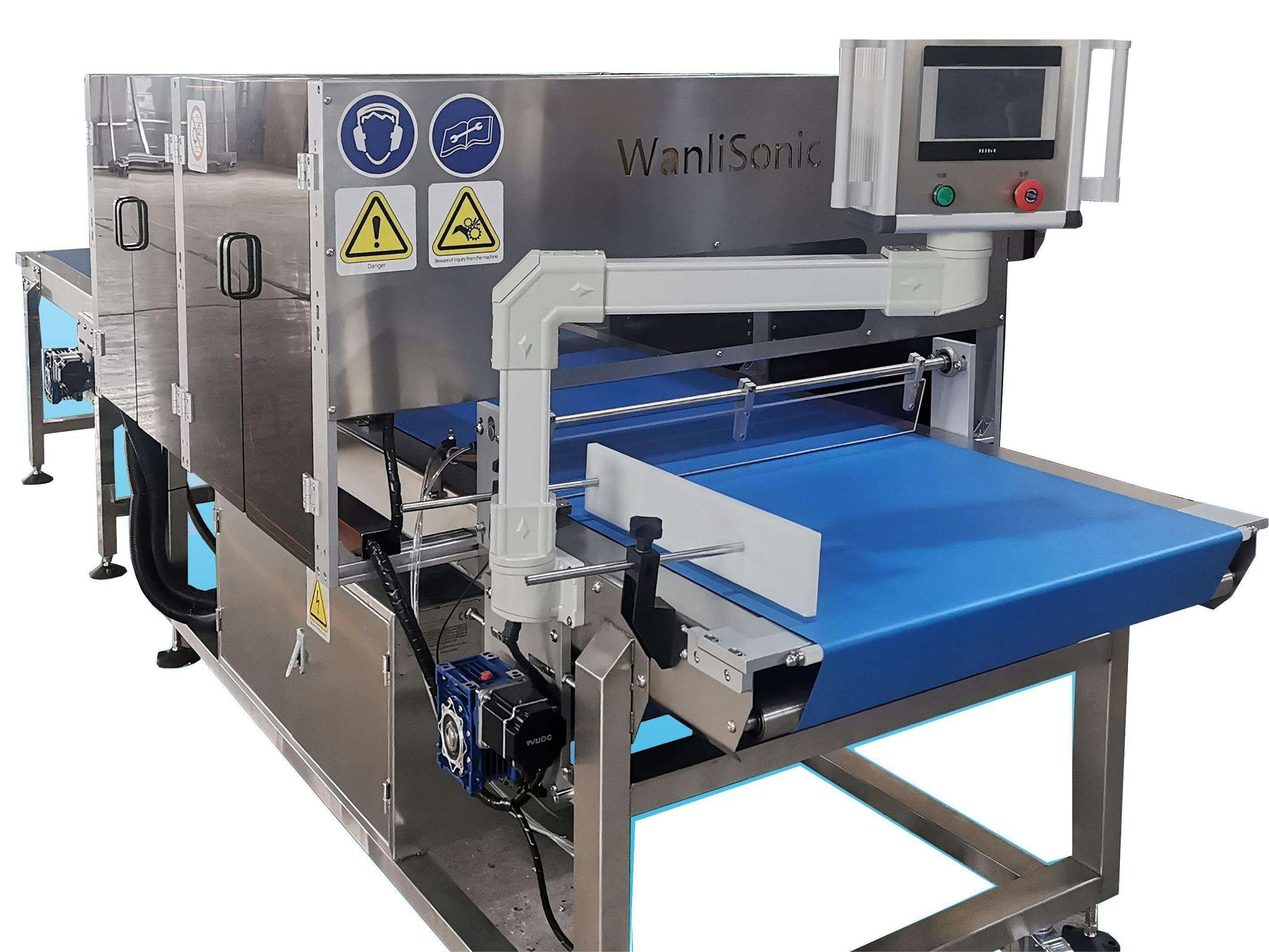Introduction
Ultrasonic cutting machine is a device that uses wave energy for cutting. Using the cutting edge of the cutting blade, the ultrasonic energy is concentrated and input to the cutting part of the material to be cut. Under the action of the ultrasonic energy, this part is instantly softened and melted, and the strength is greatly reduced. At this time, as long as a small cutting force is applied, the purpose of cutting the material can be achieved.
Ultrasonic cutting machine does not need sharp blades, does not need a lot of pressure, and will not break or damage the cutting material. At the same time, the cutting blade is doing ultrasonic vibration, the friction resistance is particularly small, and the material to be cut is not easy to stick to the blade. It has obvious cutting effect on frozen, sticky and elastic materials, such as food, rubber or objects that are inconvenient to apply pressure. At the same time of cutting, the cutting part has fusion effect, and the cutting part is edge-sealed, which can prevent the loosening of the tissue of the cut material (such as textile material flash)
Advantage
Ultrasonic cutting machine features no sharp blade, no pressure, no chipping or damage to the cutting material.
1. The cutting blade is doing ultrasonic vibration, the friction resistance is particularly small, and the material to be cut is not easy to stick to the blade. It has obvious cutting effect on frozen, sticky and elastic materials. Such as food, rubber or inconvenient to cut pressure object is particularly effective.
2. At the same time as cutting, the cutting part has fusion effect. The cutting part is perfectly edge-sealed, which can prevent the looseness of the cut material (such as textile material flash). The use of ultrasonic cutting machine can also be expanded, such as digging holes, shoveling, scraping paint, carving, slitting, etc.
Distinguish traditional cutting
Ultrasonic cutting machine is a device that uses wave energy for cutting. The biggest feature is that it does not use traditional cutting edges.
Traditional cutting uses a knife with a sharp edge to press against the material being cut. The pressure is concentrated at the edge of the blade, and the pressure is very large, exceeding the shear strength of the material being cut, and the molecular bond of the material is pulled apart and cut. Because the material is pulled apart by strong pressure, the cutting blade should be very sharp, and the material itself must withstand relatively high pressure. It is not good for cutting soft and elastic materials, and it is more difficult for sticky materials.

